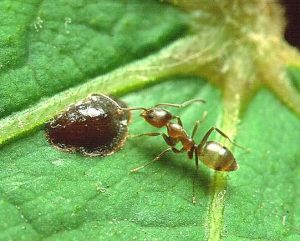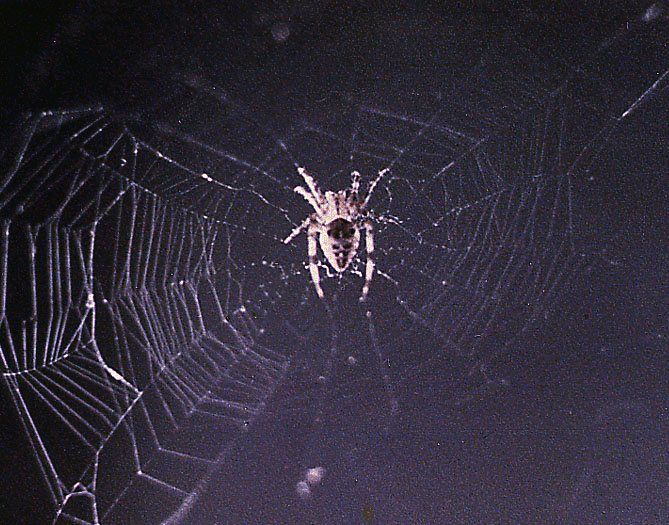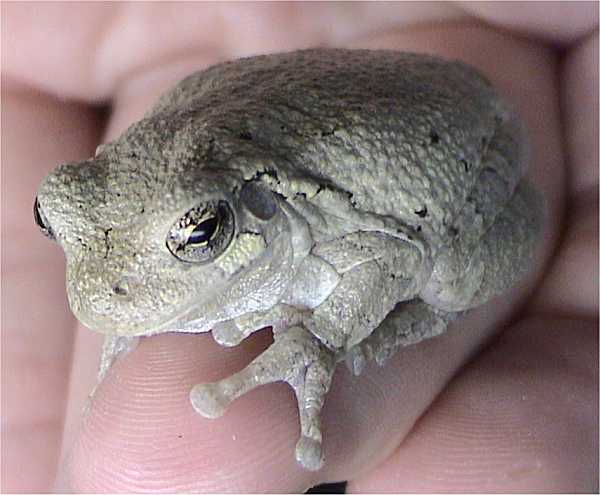If you have access to the internet than you have probably heard about the crisis about bees and the effect pesticides have on them; primarily that the pesticides are killing them (The Bees are Vanishing!). But bees are not the only animals that are being hurt by these toxic chemicals; birds are having trouble migrating, ants are changing their levels of aggression, and amphibians are becoming more susceptible to predation, to name only a few example (Video on how pesticides may be worse that you thought). Pesticides are affecting not only animal’s physical bodies, but how they interact with the world. Animal behavior is being altered and this is causing differential survival in individuals exposed to the toxins (A letter from the Defenders of Wildlife). It is becoming hard to ignore the impact that chemical pesticides have on animals and their behavior. I would like to impart on you some more in depth information on some examples of changes in animal behavior caused by pesticides.

Native Southern Ants http://www.arizonensis.org/sonoran/fieldguide/arthropoda/solenopsis_xyloni.html

Invasive Argentine Ants https://en.wikipedia.org/wiki/Argentine_ant#/media/File:Linepithema_Argentine_ant.jpg
I’ll start with ants; they are numerous, they are everywhere, and they will outlive us all (Respect the insects!). There was a study that experimented with Neonicotinoids and the ant’s reaction to them using invasive Argentine ants and native Southern ants. Neonicotinoids have been regaled to cause confusion in bees and decreases in their foraging efforts. In ants they cause differential levels of aggression during interspecific interactions. They reduced brood production in the invasive ants while increasing their aggression towards the native species, while the native species tended to have a lower aggressive behavior when exposed. Their foraging abilities remained unaffected and this may be due to the fact that bees and ants use different cues to locate food and impart the location of the food source. In a way this could be used in a conservational light by fighting off an invasive species. If you were able to target only the Argentine ants with the pesticides it would reduce their numbers over time causing them to be easy picking for the Southern ants, with their larger numbers (Ant paper).
In a more agricultural application, farmers have a generally negative opinion towards ants. Many agriculturally minded people do not like ants as they think they destroy crops, but they can actually be used as a natural alternative to pesticides. A mature colony of ants can keep up to 70% of the crop pest from destroying the crops, which is on par with commercial chemical pesticides.
It is not only urban or agricultural environments that deal with the effects of pesticides, in the rural wilderness many amphibians must battle the side effects of chemicals that reach them. Typically in nature common pesticide carbaryl is only found in low concentrations. These quantities were assumed to be nonlethal to amphibians, but other important factors were not taken into account. Factors such as temperature, competition, and predation can amplify the small amount of pesticides within their bodies to cause lethal effect even though it is within acceptable levels. This is mostly due to stress. Predatory stress alone can make carbaryl 2-4 times more deadly to the gray tree frogs. In the study different species were differentially affected both by the chemicals and by certain stressors, but over all this suggests that the apparently safe concentrations can be deadly when coupled with the right environmental cues. Not only is this chemical directly deadly to amphibians, it also causes premature death of individuals by making them more susceptible to predation (Amphibian paper). So if the chemical doesn’t kill them out right through the stress of predation, it will still indirectly kill them through actual predation (confusing, but true).
Pesticides have a large impact on the world around us, most of that impact being negative with the upside being larger quantities of food for us. This is not a new problem, Rachel Carson wrote a book “Silent Spring” (1962) that speaks up about the uses of DDT back in the day. There is a song titled “Pesticide Song” by Terry Winchell that is both pleasing and informative on this issue, Carson is mentioned as well. To quote Carson: “In nature nothing exists alone”. What we do affects everything around us. Through these chemical pesticides we are changing animal behavior when they have already struggled to adapt to our urbanization. Animals can only respond three ways to change, they can disperse, adjust through phenotypic plasticity, or adapt through genetic change (Behavioral response paper). We will be in a bad situation if the bees get wise and disperse on us, as they pollinate more than a third of our food sources. What if the change is too large to be adjusted to through phenotypic plasticity? Or the majority of populations die off before genetic change can benefit them? What if species are successful in adapting to our civilization but not are in an evolutionary trap? We need to do something now, stop the chemical pesticides and all the negative side effects that come with it. This has to be done before we lose more biodiversity and are unable to reverse the affects.
I wanted to leave you with some cool information I came across while writing this post. Did you know spider webs are very efficient air pollutant cleaners? The electrically conductive glue that is spread across the surface of the web helps it spring towards not only prey but positively and negatively charged molecules! This allows the web to collect airborne particles and helps spiders catch their prey (Cool spider article).

https://en.wikipedia.org/wiki/Spider_web#/media/File:Arabella_web_aboard_second_Skylab_mission_(cropped).jpg



Recent Comments